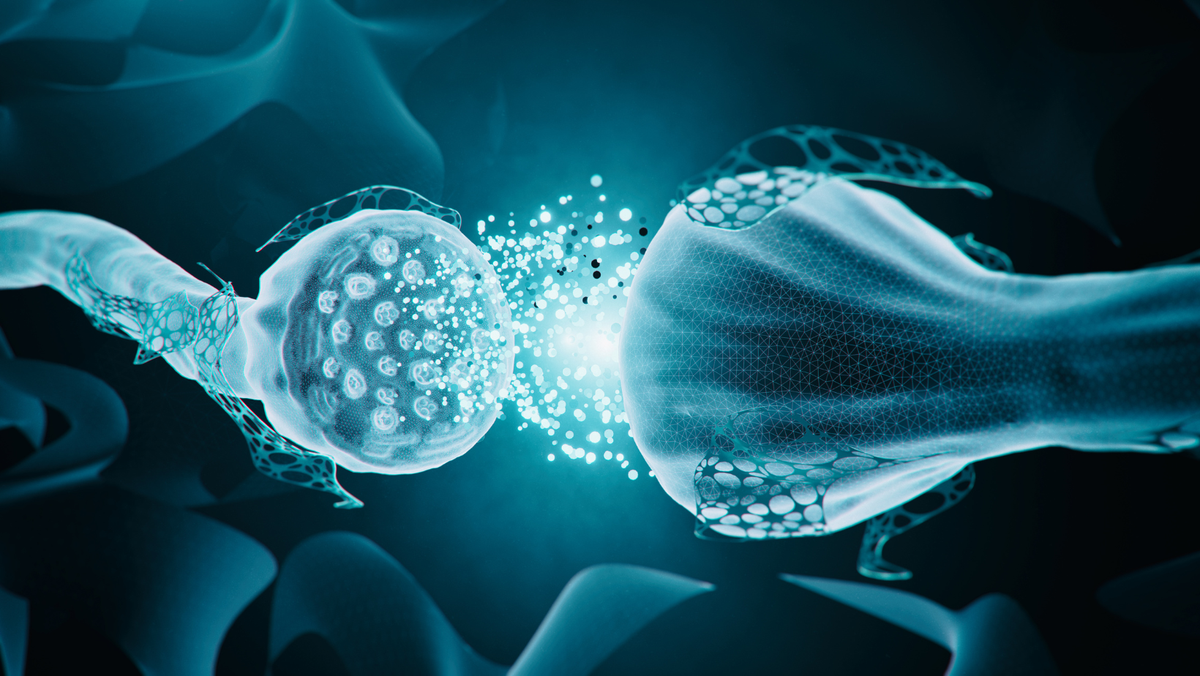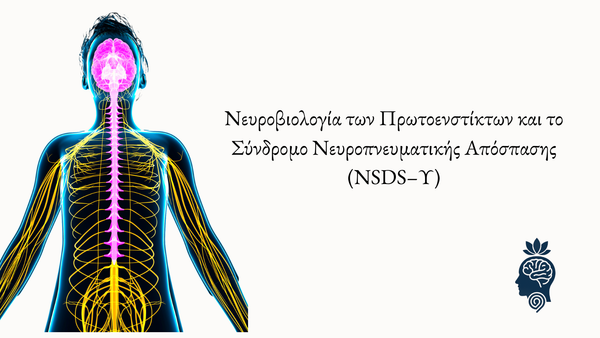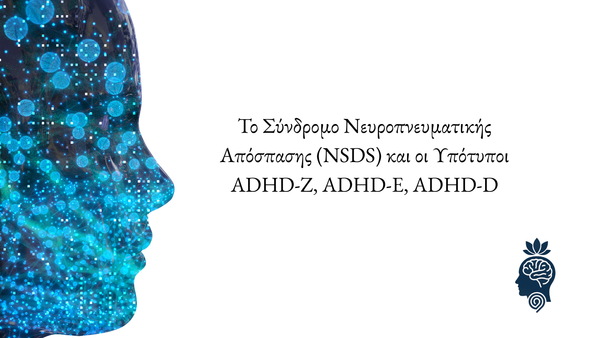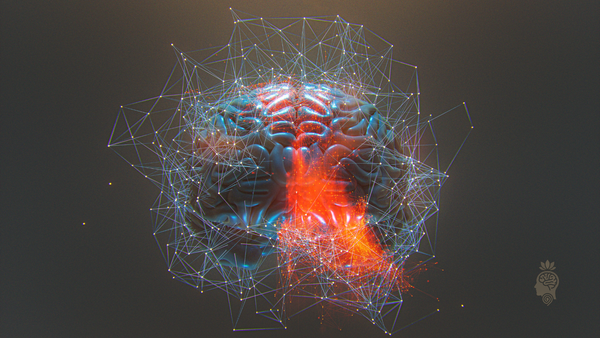Embryonic Neuroadaptations: A New Worldview for Developmental Neuroscience and the Dismantling of Psychopathology

The current research develops a fresh analytical system for studying human neurodevelopment through "embryonic neuroadaptations." This study discards traditional psychiatric diagnosis pathologising to demonstrate that prenatal and postnatal environmental factors drive the nervous system to develop survival mechanisms instead of "diseases." The third week of pregnancy marks the beginning of autism, attention deficit disorder, and emotional disconnection as adaptations to high-threat conditions. The study incorporates modern neuroscience and epigenetic research to establish "neurospiritual survival" as the link between scientific findings and phenomenological understanding.
Medical and psychiatric fields currently view neurodevelopmental abnormalities as disease-like conditions which they consider to be natural failures of development. Modern neuroscientific research contradicts this view by showing how the human nervous system transforms based on intrauterine life experiences. The paper develops "embryonic neuroadaptations" as a core understanding for studying human development alongside the wrongfully labeled psychological disorders.
The Biological Basis of Embryonic Neuroadaptations
1.1 The nervous system develops its structure between the third week of pregnancy and birth.
The nervous system starts its development through neural tube formation which begins in the third week of pregnancy. Although these initial neural structures do not possess mature cortex functions or cognitive abilities they function as centers which detect and store hormonal and biochemical signals from the mother.
1.2 The Role of Cortisol and the HPA Axis
High cortisol levels from maternal stress or abuse reach the fetus through placental transmission. When the fetal HPA axis becomes overactive it leads to the development of an organism that remains alert yet introverted or disconnected.
Neuroscientists Confirming the Reapproach
2.1 Bruce Perry
Perry explains that human brain organization emerges through experiences during development (2006). The brain develops defensive and hyperactive patterns when a child encounters early chaos or abuse but these patterns do not represent inherent dysfunction.
2.2 Gabor Maté
Maté explains that "disorder represents normal human responses to abnormal environmental conditions" (2022) which demonstrates that trauma exposure creates the primary cause instead of supposed "anomalies".
2.3 Rachel Yehuda
Through epigenetic studies, Yehuda has demonstrated that prenatal trauma transfers genetically, affecting neural development and psychological resilience.
2.4 Stephen Porges
According to Porges' Polyvagal Theory disconnection functions as a protective mechanism rather than an indication of damage. Social withdrawal functions as a protective mechanism which helps the fetus evade overwhelming sensory inputs or biological threats.
Asperger's, Autism, and Neurodevelopmental "Disorders" as Survival Phenotypes
Scientists should analyze Asperger's, autism and ADHD behavior as survival-based embryonic adaptations. The fetus develops defensive strategies through hypersensitivity together with contact avoidance and routine fixation because the prenatal environment appears hostile.
The Proposed New Terminology: "Embryonic Neuroadaptations"
The concept "neurodevelopmental deficit" receives replacement through this term. The process results in a developed approach rather than any deficiency. Organisms create these adaptive developmental patterns through their requirement to prepare for their upcoming environment.
Clinical and Therapeutic Implications
The therapeutic approach needs a total transformation because it must shift from individual "fixation" to understanding their neurobiological survival experiences. Through therapy patients gain freedom from survival strategies that have become unnecessary.
Conclusions and Prospects for Doctoral Research
The Embryonic Neuroadaptations concept provides a basis to develop scientific terminology for neurological and psychological variations. The proposed research for a second doctorate aims to establish an integrated framework which combines neuroscience with epigenetics together with psychology and biophilosophy.
BIBLIOGRAPHY
Maté, G. (2022). The Myth of Normal. Penguin Books.
Perry, B. D., & Szalavitz, M. (2006). The Boy Who Was Raised as a Dog. Basic Books.
Yehuda, R. et al. (2014). "Holocaust exposure induced intergenerational effects on FKBP5 methylation." Biological Psychiatry.
Porges, S. (2011). The Polyvagal Theory. Norton.
The Secret Life of the Unborn Child written by Verny and Kelly appeared in 1981 through Summit Books.
CHAPTER 1
Introduction to the Concept of Neuroadaptation
1.1 Analysis of the Definition of Neurodevelopmental "Disorder"
The field of mental health science which emerged during the twentieth century and following periods developed its foundational principles through an opposition between typical and abnormal states. According to DSM (Diagnostic and Statistical Manual of Mental Disorders) the term "neurodevelopmental disorder" describes functional or structural brain or nervous system deviations from established normal standards.
The scientific progress in neuroscience together with epigenetics and trauma studies creates challenges for this framework. Nervous systems adapt their development according to intrauterine and early life environments that frequently become unsustainable or threatening or traumatic.
The medical term "disorder" emerges from social processes instead of biological foundations because it depends on traditional standards of proper human behavior. This expectation frequently fails to recognize the real bodily experiences that shaped the human form.
1.2 The Notion of "Normal" as a Cultural Narrative
The term normal exists as a social construct which lacks objectivity. Modern society defines normal brain functions as those which follow social discipline rules of politeness and stability and productivity. Any behavior that differs from social norms receives the diagnosis of a disorder among them autism and ADHD and OCD and emotional disconnection.
Biology recognizes what society labels as dysfunction as adaptive responses. The child's birth characteristics of routine focus and contact avoidance and analytical thinking do not indicate autism because they prepare him for environments where social interactions present dangers.
The "normal" stands as a social expectation rather than statistical average while it receives bioinfluence from culture thus leading to the pathologization of survival mechanisms in the body.
1.3 The Theoretical Background of Embryonic Neuroadaptation
This article supports the fundamental idea that the nervous system establishes adaptive mechanisms rather than pathological conditions. After the third week of gestation during neural tube formation the fetus starts recording maternal environment biochemical messages primarily through the hormone cortisol. The brain processes these messages as physical warnings about the upcoming world instead of traditional information signals.
The term "Embryonic Neuroadaptation" functions as a replacement for "developmental disorder" terminology. Through bio-neurological adaptation the brain together with the nervous system develops survival strategies for outside-world conditions. This means that:
Intense threats during development result in neural pathways that either enhance alertness or create social detachment.
A person who experienced trauma in their relational environment tends to limit their social involvement.
The unstable environment during intrauterine development creates a requirement for internal order and obsessive routine or repetitive behaviors that get labeled as symptoms.
A new scientific vocabulary must emerge to shift pathology towards neuroadaptation while evaluating human beings by their survival needs instead of their normalcy status.
CHAPTER 2
The Development of the Nervous System & The Impact of Intrauterine Trauma
2.1 Neural Development from the Third Week of Pregnancy
Human neurogenesis commences during the third week of pregnancy when the neural tube develops. The brain and spinal cord structures start to develop from this point. Although the cortex is not fully developed these early neural structures function by processing and responding to hormonal signals that come from the mother's body.
The rapid growth of neural cells exists throughout all forms of plasticity. Any signal which reaches the nervous system gets recorded as material that defines the nervous system's architecture instead of being treated as "data."
Scientists have documented that reflexive movements occur in fetuses between the seventh to eighth weeks of pregnancy and neuronal responses to stressful events emerge during the twelfth to fourteenth weeks of gestation.2.2 The Role of Cortisol and the HPA Axis
The hypothalamic-pituitary-adrenal axis (HPA) functions as the main neuroendocrine system that regulates stress responses in the body. The body of mothers who experience emotional or physical trauma produces elevated levels of cortisol. The placental enzymatic barrier known as 11β-HSD2 filters cortisol from the fetus's exposure yet this filtering capacity weakens during chronic stress periods thus enabling direct stress chemical exposure.
This has a triple consequence:
The fetal brain develops altered sensitivity in its cortisol receptor mechanisms.
The amygdala receives different developmental patterns (fear and threat regulation) while the hippocampus develops distinct patterns (memory regulation).
This process generates survival behaviors based on the anticipated conditions after birth.
The research conducted by Van den Bergh et al. (2005–2017) reveals that maternal anxiety causes fetal HPA system variations which result in decreased hippocampal dimensions and enhanced amygdala activity that connects to adult anxiety disorders and attachment problems.
2.3 Epigenetics: Trauma as a Mechanism for Triggering or Silencing Genes
The field of epigenetics explores how environmental factors select which genes to activate or deactivate for expression. The prolonged emotional stress or abuse experiences of pregnant women trigger molecular changes through methylation which affect vital genes of their fetus.
Research conducted by Yehuda et al. (2014) demonstrated that Holocaust survivor children developed FKBP5 gene methylation patterns linked to stress responses without enduring the traumatic events themselves. The modification of genes through epigenetics enables trauma to pass from one generation to the next.
The developing fetus receives neurobiological programming from the mother instead of just biological material.
2.4 The Brain as an Organ of Predictability
According to the new neuroscientific model of "predictive coding" (Friston, 2010), the brain does not react—it predicts. That is, it is programmed based on what it expects to encounter. The embryonic brain develops according to two factors: the experiences it encounters and the survival information the mother's body transmits.
A body full of cortisol says: "The world is threatening."
A disconnected body says: "Closeness is dangerous."
A frozen body says: "Action is not safe."
The fetus stores this information as its fundamental understanding of survival which leads to corresponding changes in brain structure.
CHAPTER 3
From Adaptation to Diagnosis: How Science Misinterpreted Strategy as Disorder
3.1 The Historical Origin of the Term "Disorder"
After World War II the concept of mental "disorder" became the fundamental focus of psychiatric scientific research. The American Psychiatric Association (APA) established the DSM (Diagnostic and Statistical Manual of Mental Disorders) which led psychology and psychiatry to adopt a categorical system based on typological types with standardised symptoms.
The fundamental problem with this approach was its rejection of personal experiences and biological adaptations, along with subjective interpretations from the start. The investigation focused exclusively on identifying brain-related problems instead of investigating the person's experiences. The individual became separated from the environmental influences that shaped their existence.
This approach mirrors the Cartesian view that mental functions operate like faulty machinery. The therapeutic need for clinical classification and pharmaceutical management, and prognostic statistics overshadowed the deep traumatic experiences of the individual. The medical establishment converted symptoms into a personal identity that replaced the original survival story.
3.2 The Social Construction of Autism and ADHD
The two conditions Autism and ADHD demonstrate how their diagnosis rates have sharply increased throughout recent times. The medical field rarely examines prenatal or early trauma when diagnosing these conditions. They present brain dysfunction as the sole explanation for these conditions without referencing any genetic factors.
In reality:
Children who receive ADHD diagnoses mostly experience attachment issues in their family environment.
People with Asperger's syndrome display analysis-intensive behaviour together with detachment and emotional withdrawal that matches threat-related coping mechanisms.
The neural patterns in many cases match the imprints of traumatic information rather than demonstrating stable, dysfunctional patterns.
When an individual deviates from typical behaviour they often create a protective mechanism. When children withdraw from social contact or struggle to follow structured commands, their nervous system has learned to recognise threatening stimuli. The brain functions as a protective mechanism rather than an indication of malfunction.
3.3 From DSM to Neurobiological Phenotype
The brain operates in ways that do not follow linear patterns. It is plastic, emotionally influential, and experience-embedded. The DSM uses a model which treats the human body as if it were unchanging and standardized and without historical context.
Our proposed approach uses neuroadaptive phenotypes instead of diagnostic labels to base its methodology. That is:
The nervous system develops its form through external signal reception.
Brain structures do not "become ill," they are regulated.
The "symptoms" represent adaptive responses which appear as functional traces while being distinct from actual pathological defects.
A brain that seems distracted operates as a defense mechanism to steer clear of focus because it associates focus with traumatic experiences.
The brain of autistic individuals maintains distance because it has learned to defend itself from close relationships.
The "hyperactive" brain is not dysfunctional—it is in constant threat anticipation.
These phenotypes need identification through diagnostic terminology which analyzes body experiences instead of symptom checklists.
CHAPTER 4
The New Terminology: Embryonic Neuroadaptations
4.1 Definition of the Term
Embryonic Neuroadaptations exist as a defined medical term which is described as follows:
The nervous system of the embryo undergoes dynamic epigenetic guidance to adapt its development based on maternal psychobiological environmental factors for enhancing survival in the predicted postnatal world.
The concept of embryonic neuroadaptations differs from neurodevelopmental disorders since it emphasises directional brain development with predictive capabilities instead of indicating pathology. The system we are observing functions as survival intelligence during prenatal stress conditions rather than operating as faulty.
4.2 Phenotypes of Embryonic Adaptation
Three distinct phenotypes of embryonic neuroadaptation emerge based on the exposure to different intrauterine conditions.
Withdrawal & Emotional Disconnection Phenotype
Source: Emotionally detached or depressive mother
Neurological pattern: Minimization of social attachment, increased function in the prefrontal cortex, reduced vagal nerve tone
Behavioral imprint: Mild autism, Asperger's, “cold” adaptation
Hypervigilance & Reactivity Phenotype
The intrauterine environment becomes abusive or threatening due to violence or fear which causes cortisol production.
Neurological pattern: Hyperactivity in the amygdala, sensitive HPA axis, low homeostatic control
Behavioral imprint: ADHD, hyperactivity, impulsivity, regulation difficulty
Internal Overanalysis & Control Phenotype
Source: Unpredictable, chaotic, or unstable intra-family environment
Neurological pattern: Enhanced DMN (Default Mode Network) function, hyperconnection with the prefrontal lobe, difficulty disengaging from cognitive processing
Behavioral imprint: Obsessive-compulsive tendencies, perfectionism, overanalysis, detachment
These phenotypes exist as neural strategies which become trainable through nervous system safety experiences.
4.3 Biological, Epigenetic, and Behavioural Characteristics
Embryonic neuroadaptations show systematic coherence between these different levels:
Level Manifestation
Biological Overdevelopment or underactivity of specific brain structures
Epigenetic Methylation or acetylation of genes related to stress
Neurophysiological Stimulation or withdrawal of the autonomic nervous system (Sympathetic / Vagal)
Behavioural Introversion, social withdrawal, hyperactivity, and emotional overload
Existential / Psychic Perceptual filter of the world as unsafe or unpredictable
The concept of Embryonic Neuroadaptation creates a scientific connection between neuroscience and existential biology. This method changes the focus away from "What do you have?" and directs it toward "What survival strategies did your brain develop to survive?"
CHAPTER 5
Clinical Applications & Therapeutic Implications
5.1 From "Correction" to Depathologization
Throughout many decades of clinical psychology and psychiatry training professionals have learned to address behaviors together with patterns and cognitive functions as problematic manifestations. Traditional therapeutic practice calls for therapists to either drug the disorder or perform cognitive reprogramming or behavioral management.
Embryonic Neuroadaptations completely eliminate the therapeutic approach of correction. Therapeutic efforts now focus on understanding survival signals rather than attempting to restore normalcy.
The question shifts:
From: "What is wrong with you?"
To: "What did your nervous system have to do to protect you?"
5.2 Therapeutic Methods Respecting Neuroadaptation
The therapeutic methods that respect Embryonic Neuroadaptations need to display three fundamental features.
A. Depathologizing Language
The therapist avoids using terms including "disorder," "symptoms," or "anomaly." The terms used instead are:
Neuroadaptation
Survival strategy
Neurobiological pattern
Survival archetype
This process helps clients reclaim their identity through biological history restoration while achieving dignity.
B. Neurosystemic Somatic-Centered Presence
The adaptation took place within the physical structure of the body. The brain cannot understand concepts without first establishing physical connections. The most effective methods include:
Somatic Experiencing (Levine)
Polyvagal regulation (Porges)
Neurospiritual Meditation (Koumaradios)
Trauma-centered phonotherapy (Safe & Sound Protocol)
The main objective is for the nervous system to learn new safety skills which enable it to release its previous coping mechanisms.
C. Neurospiritual Rewriting of Core Messages
The client experiences Neurospiritual Psychotherapy to:
The client returns to their embryonic imprints by using imagery or emotional emergence or guided reliving techniques
The client identifies their survival mechanism as "I withdraw to stay safe from pain."
The client develops inner space to experience neural safety from within.
5.3 Neurospiritual Psychotherapy as an Application Framework
Neurospiritual Psychotherapy employs the Neuroadaptations concept as its foundation and operates within current research settings. Some of its main tools include:
Neurofantasy: Using creative imagery to retrain emotional patterns
Neuroinvocation: Prayer-meditative interaction with trauma without cerebral imposition
Embryonic Record Reliving: Deep guided practice revisiting the body's earliest safe or threat imprints
This approach preserves the existing model by integrating new elements which respect the neurobiological background as sacred space. Therapy is not correction. The body's behavior finds spiritual reconciliation through the fundamental reason it reacted in such a manner.
CHAPTER 6
Conclusions & Proposals for Future Research
6.1 Summary of Key Findings
The study introduces an entirely scientific and revolutionary inquiry.
The nervous system starts building during the third week of gestation and the mother's experiences are recorded in biochemical form so why do we continue to label later adaptations as disorders?
The main points confirmed are:
During the intrauterine experience the nervous system develops in total synchronization with the developing embryo.
The nervous system develops fear and withdrawal and hypervigilance circuits through exposure to stressful hormonal environments.
Traumatic experiences become stored in specific genes through epigenetic transmission while creating survival instructions for thought patterns and action responses and reaction behaviors.
Psychiatric diagnosis of "disorder" can be seen as an embryonic neuroadaptation phenotype which represents an environmental survival strategy the body predicted.
The human body operates through adaptation based on its wisdom as demonstrated by the preceding evidence.
6.2 Proposals for the Reevaluation of Psychiatric Science
Embryonic Neuroadaptations need scientists to reevaluate three specific areas of psychiatric science.
DSM diagnostic categories
Pharmaceutical intervention as a primary strategy
The educational perception of "learning difficulty"
How introversion, disconnection, or "attention deficit" are interpreted
New diagnoses are not needed because we require a different perspective regarding children's functional behaviors.
Therapists along with scientists and researchers need to adopt a model which respects individual experiences through body-focused practices instead of suppressing personal histories.
6.3 Proposals for a Second Doctorate & Research Application
"Embryonic Neuroadaptations & Neurophenotypic Resilience: Towards a New Integrative Model of Developmental Psychology"
Proposed fields of application:
Epigenetic recording & HPA axis profiling in children with autistic traits
Clinical study of phenotype change through neuroregulatory therapy
Psychosomatic function assessment between children diagnosed with conditions and children whose neuroadaptation strategies differ.
Introduction of Neurospiritual Psychotherapy as a therapeutic framework for non-pathologising rehabilitation
Final Position
The Neurospiritual understanding of human development using Embryonic Neuroadaptations forces us to consider a fundamental question.
Your brain exists without any need for correction. The challenge you perceive exists as evidence that you successfully survived.
The answer requires a truthful response which may lead future psychology to replace diagnostic labels with respect for human self-preservation that begins before birth.
Bibliography (APA 7th)
Neurodevelopment & Intrauterine Adaptation.
Stiles, J., & Jernigan, T. L. (2010). The basics of brain development. Neuropsychology Review, 20(4), 327–348. https://doi.org/10.1007/s11065-010-9148-4
Van den Bergh, B. R. H., Mulder, E. J. H., Mennes, M., & Glover, V. (2005). Antenatal maternal anxiety and stress and the neurobehavioural development of the fetus and child: Links and possible mechanisms. A review. Neuroscience & Biobehavioral Reviews, 29(2), 237–258. https://doi.org/10.1016/j.neubiorev.2004.10.007
Charil, A., Laplante, D. P., Vaillancourt, C., & King, S. (2010). Prenatal stress and brain development. Brain Research Reviews, 65(1), 56–79. https://doi.org/10.1016/j.brainresrev.2010.06.002
Epigenetics and Traumatic Transmission
Yehuda, R., Daskalakis, N. P., Bierer, L. M., Bader, H. N., Klengel, T., Holsboer, F., & Binder, E. B. (2016). Holocaust exposure induced intergenerational effects on FKBP5 methylation. Biological Psychiatry, 80(5), 372–380. https://doi.org/10.1016/j.biopsych.2015.08.005
Weaver, I. C. G., et al. (2004). Epigenetic programming by maternal behavior. Nature Neuroscience, 7(8), 847–854. https://doi.org/10.1038/nn1276
Meaney, M. J. (2010). Epigenetics and the biological definition of gene × environment interactions. Child Development, 81(1), 41–79. https://doi.org/10.1111/j.1467-8624.2009.01381.x
HPA Axis, Cortisol & Perinatal Trauma
Gunnar, M. R., & Quevedo, K. (2007). The neurobiology of stress and development. Annual Review of Psychology, 58, 145–173. https://doi.org/10.1146/annurev.psych.58.110405.085605
Lupien, S. J., McEwen, B. S., Gunnar, M. R., & Heim, C. (2009). Effects of stress throughout the lifespan on the brain, behaviour and cognition. Nature Reviews Neuroscience, 10(6), 434–445. https://doi.org/10.1038/nrn2639
O’Connor, T. G., et al. (2005). Prenatal anxiety predicts individual differences in cortisol in pre-adolescent children. Biological Psychiatry, 58(3), 211–217. https://doi.org/10.1016/j.biopsych.2005.04.012
Depathologization and Alternative Interpretations of Disorders
Maté, G. (2022). The Myth of Normal: Trauma, Illness and Healing in a Toxic Culture. Avery/Penguin.
Perry, B. D., & Szalavitz, M. (2006). The Boy Who Was Raised as a Dog: And Other Stories from a Child Psychiatrist’s Notebook. Basic Books.
Timimi, S. (2014). No more psychiatric labels: Why formal psychiatric diagnostic systems should be abolished. International Journal of Clinical and Health Psychology, 14(3), 208–215. https://doi.org/10.1016/j.ijchp.2014.03.004
Polyvagal Theory & Neuro-systemic Regulation
Porges, S. W. (2011). The Polyvagal Theory: Neurophysiological Foundations of Emotions, Attachment, Communication, Self-Regulation. Norton.
Dana, D. A. (2018). The Polyvagal Theory in Therapy: Engaging the Rhythm of Regulation. Norton.
Prenatal Psychology & Experiential Development
Verny, T., & Kelly, J. (1981). The Secret Life of the Unborn Child. Summit Books.
Schore, A. N. (2001). Effects of a secure attachment relationship on right brain development, affect regulation, and infant mental health. Infant Mental Health Journal, 22(1-2), 7–66. https://doi.org/10.1002/1097-0355(200101/04)22:1<7::AID-IMHJ2>3.0.CO;2-N
Neurospiritual Interpretation & Primary Theoretical Framework
Koumaradios, C. B. (2025). Embryonic Neuroadaptations: A Neurophenotypic Framework of Survival Beyond Pathology [Integrative Health Sciences]. NeuroSpiritual Therapy School.
Koumaradios, C. B. (2025). NeuroSpiritual Therapy & the Collapse of Diagnostic Psychiatry: Twelve Clinical Case Studies and a New Model of Integration. NeuroSpiritual Research Press.
Written by: Christos B. Koumaradios
Doctoral Candidate in Integrative Health Sciences
Holistic Psychotherapist – Neurospiritual Researcher
Εμβρυακές Νευροπροσαρμογές: Μια Νέα Κοσμοθεωρία για την Αναπτυξιακή Νευροεπιστήμη και την Κατάρριψη της Ψυχοπαθολογίας
Η παρούσα έρευνα αναπτύσσει ένα νέο αναλυτικό σύστημα για τη μελέτη της ανθρώπινης νευροανάπτυξης μέσω των «εμβρυακών νευροπροσαρμογών». Η μελέτη αυτή απορρίπτει την παραδοσιακή παθολογίζουσα προσέγγιση των διαγνώσεων στην ψυχιατρική και υποστηρίζει ότι τα ενδομήτρια και πρώιμα περιβαλλοντικά ερεθίσματα οδηγούν το νευρικό σύστημα να αναπτύσσει μηχανισμούς επιβίωσης αντί για «ασθένειες». Η τρίτη εβδομάδα κύησης θεωρείται η αρχή για την εμφάνιση του αυτισμού, της διαταραχής ελλειμματικής προσοχής και της συναισθηματικής αποσύνδεσης ως προσαρμογές σε περιβάλλοντα υψηλής απειλής. Η μελέτη ενσωματώνει σύγχρονη νευροεπιστημονική και επιγενετική έρευνα για να θέσει τη «νευροπνευματική επιβίωση» ως συνδετικό κρίκο μεταξύ επιστημονικών ευρημάτων και φαινομενολογικής κατανόησης.
Οι ιατρικές και ψυχιατρικές επιστήμες αντιμετωπίζουν σήμερα τις νευροαναπτυξιακές αποκλίσεις ως παθολογικές καταστάσεις, που θεωρούνται φυσιολογικές αποτυχίες της ανάπτυξης. Ωστόσο, η σύγχρονη νευροεπιστημονική έρευνα διαψεύδει αυτή την άποψη, αποδεικνύοντας πως το ανθρώπινο νευρικό σύστημα μεταμορφώνεται βάσει των εμπειριών που συλλέγει ενδομήτριως και νωρίς στη ζωή. Το κεντρικό concept της εργασίας είναι οι «εμβρυακές νευροπροσαρμογές», ως βασική κατανόηση για τη μελέτη της ανθρώπινης εξέλιξης και των φαινομένων που παραπλανητικά χαρακτηρίζονται ως διαταραχές.
Η Βιολογική Βάση των Εμβρυακών Νευροπροσαρμογών
1.1 Ανάπτυξη του Νευρικού Συστήματος από την Τρίτη Εβδομάδα της Κύησης
Το νευρικό σύστημα αρχίζει να διαμορφώνεται με τον σχηματισμό του νευρικού σωλήνα την τρίτη εβδομάδα κύησης. Αν και οι πρώιμες δομές δεν διαθέτουν ώριμο φλοιό ή γνωστικές λειτουργίες, λειτουργούν ως κέντρα που ανιχνεύουν και αποθηκεύουν ορμονικά και βιοχημικά σήματα από τη μητέρα.
1.2 Ο Ρόλος της Κορτιζόλης και του Άξονα HPA
Υψηλά επίπεδα κορτιζόλης από το στρες ή την κακοποίηση της μητέρας διαχέονται μέσω του πλακούντα στο έμβρυο. Η υπερλειτουργία του άξονα HPA οδηγεί σε ανάπτυξη όντος που μένει σε κατάσταση επαγρύπνησης, αλλά αποσυνδεδεμένου ή εσωστρεφούς.
Οι Επιβεβαιωμένοι Νευροεπιστήμονες της Νέας Προσέγγισης
2.1 Bruce Perry
Ο Perry εξηγεί ότι η οργάνωση του ανθρώπινου εγκεφάλου προέχει μέσω των εμπειριών που αποκτά κατά την ανάπτυξη (2006). Αντίσταση και υπερκινητικά μοτίβα αναπτύσσονται όταν ένα παιδί αντιμετωπίζει πρώιμους χαοτικούς ή κακοποιητικούς παράγοντες, χωρίς να υποδηλώνουν εγγενή δυσλειτουργία.
2.2 Gabor Maté
Ο Maté υποστηρίζει ότι «η διαταραχή αντιπροσωπεύει μια φυσιολογική αντίδραση σε αφύσικες περιβαλλοντικές συνθήκες» (2022), δηλώνοντας ότι η εμπειρία τραύματος αποτελεί πρωταρχική αιτία και όχι μια «ανωμαλία».
2.3 Rachel Yehuda
Μέσω επιγενετικών ερευνών, η Yehuda απέδειξε ότι το προγεννητικό τραύμα μεταφέρεται γενετικά, επηρεάζοντας την ανάπτυξη του εγκεφάλου και την ψυχολογική ανθεκτικότητα.
2.4 Stephen Porges
Η θεωρία του Πολυπληγικού Νεύρου επιβεβαιώνει ότι η αποσύνδεση λειτουργεί ως στρατηγική προστασίας αντί για ένδειξη βλάβης. Η κοινωνική απόσυρση βοηθά το έμβρυο να αποφύγει υπερβολική αισθητηριακή φόρτιση ή βιολογικές απειλές.
Η Asperger, ο Αυτισμός και οι Νευροαναπτυξιακές «Διαταραχές» ως Φαινότυποι Επιβίωσης
Οι επιστήμονες θα πρέπει να ερμηνεύουν τη συμπεριφορά που χαρακτηρίζεται ως Asperger, αυτισμός ή ΔΕΠΥ ως νευροπροσαρμογές βασισμένες σε μηχανισμούς επιβίωσης. Το έμβρυο σχηματίζει αμυντικά μοτίβα μέσω υπερευαισθησίας, αποφυγής επαφής και εμμονής στη ρουτίνα, διότι το περιβάλλον σε μέσα στην εγκυμοσύνη φαίνεται εχθρικό.
Η Προταθείσα Νέα Ορολογία: «Εμβρυακές Νευροπροσαρμογές»
Αντί για όρους όπως «νευροαναπτυξιακή καθυστέρηση», εισάγεται η έννοια των «εμβρυακών νευροπροσαρμογών», που αντικατοπτρίζει μια διαδικασία ανάπτυξης με λειτουργικό και προβλεπτικό σκοπό. Τα οργανιστικά μοτίβα που σχηματίζονται προέρχονται από την ανάγκη να προετοιμαστούν για τον κόσμο που θα αντιμετωπίσουν μετά τη γέννηση.
Κλινικές και Θεραπευτικές Επιπτώσεις
Η θεώρηση αυτή επιτάσσει μια δραστική μεταμόρφωση της θεραπευτικής πρακτικής, δηλαδή μετάβαση από την ιδέα της «επισκευής» του άτόμου στην κατανόηση των νευροβιολογικών του επιβιωτικών εμπειριών. Μέσα από τη θεραπεία, το άτομο αποκτά ελευθερία από στρατηγικές που πλέον δεν χρειάζεται.
Συμπεράσματα και Προοπτικές για Διδακτορική Έρευνα
Η έννοια των εμβρυακών νευροπροσαρμογών παρέχει μια βάσει επιστήμης γλώσσα για τις νευρολογικές και ψυχολογικές ποικιλίες. Η προτεινόμενη έρευνα για δεύτερο διδακτορικό στοχεύει στη δημιουργία ενός ολοκληρωμένου πλαισίου που θα ενώνει τη νευροεπιστήμη με την επιγενετική, την ψυχολογία και τη βιοφιλοσοφία.
Βιβλιογραφία
Maté, G. (2022). The Myth of Normal. Penguin Books.
Perry, B. D., & Szalavitz, M. (2006). The Boy Who Was Raised as a Dog. Basic Books.
Yehuda, R. et al. (2014). «Holocaust exposure induced intergenerational effects on FKBP5 methylation». Biological Psychiatry.
Porges, S. (2011). The Polyvagal Theory. Norton.
Verny, T. & Kelly, J. (1981). The Secret Life of the Unborn Child. Summit Books.
Επιλόγος
Αν το νευρικό σύστημα αρχίζει να διαμορφώνεται από την τρίτη εβδομάδα κύησης και οι εμπειρίες της μητέρας καταγράφονται βιοχημικά σε αυτό, τότε γιατί συνεχίζουμε να χαρακτηρίζουμε τις μεταγενέστερες προσαρμογές ως διαγνώσεις;
Αυτή η ερώτηση ανοίγει το δρόμο για μια νέα προσέγγιση στην κατανόηση της ανθρώπινης ανάπτυξης, η οποία βασίζεται στην σοφία και την προσαρμοστικότητα του σώματος και του εγκεφάλου, αναγνωρίζοντας ότι η «παθολογία» συχνά είναι μια φυσιολογική και αναγκαία προστατευτική στρατηγική επιβίωσης.
ΒΙΒΛΙΟΓΡΑΦΙΑ (APA 7th)
Νευροανάπτυξη & Ενδομήτρια Προσαρμογή
Stiles, J., & Jernigan, T. L. (2010). The basics of brain development. Neuropsychology Review, 20(4), 327–348. https://doi.org/10.1007/s11065-010-9148-4
Van den Bergh, B. R. H., Mulder, E. J. H., Mennes, M., & Glover, V. (2005). Antenatal maternal anxiety and stress and the neurobehavioural development of the fetus and child: Links and possible mechanisms. A review. Neuroscience & Biobehavioral Reviews, 29(2), 237–258. https://doi.org/10.1016/j.neubiorev.2004.10.007
Charil, A., Laplante, D. P., Vaillancourt, C., & King, S. (2010). Prenatal stress and brain development. Brain Research Reviews, 65(1), 56–79. https://doi.org/10.1016/j.brainresrev.2010.06.002
Επιγενετική και Τραυματική Μετάδοση
Yehuda, R., Daskalakis, N. P., Bierer, L. M., Bader, H. N., Klengel, T., Holsboer, F., & Binder, E. B. (2016). Holocaust exposure induced intergenerational effects on FKBP5 methylation. Biological Psychiatry, 80(5), 372–380. https://doi.org/10.1016/j.biopsych.2015.08.005
Weaver, I. C. G., et al. (2004). Epigenetic programming by maternal behavior. Nature Neuroscience, 7(8), 847–854. https://doi.org/10.1038/nn1276
Meaney, M. J. (2010). Epigenetics and the biological definition of gene × environment interactions. Child Development, 81(1), 41–79. https://doi.org/10.1111/j.1467-8624.2009.01381.x
HPA Άξονας, Κορτιζόλη & Περιγεννητικό Τραύμα
Gunnar, M. R., & Quevedo, K. (2007). The neurobiology of stress and development. Annual Review of Psychology, 58, 145–173. https://doi.org/10.1146/annurev.psych.58.110405.085605
Lupien, S. J., McEwen, B. S., Gunnar, M. R., & Heim, C. (2009). Effects of stress throughout the lifespan on the brain, behaviour and cognition. Nature Reviews Neuroscience, 10(6), 434–445. https://doi.org/10.1038/nrn2639
O’Connor, T. G., et al. (2005). Prenatal anxiety predicts individual differences in cortisol in pre-adolescent children. Biological Psychiatry, 58(3), 211–217. https://doi.org/10.1016/j.biopsych.2005.04.012
Αποπαθολογικοποίηση και Εναλλακτικές Ερμηνείες Διαταραχών
Maté, G. (2022). The Myth of Normal: Trauma, Illness and Healing in a Toxic Culture. Avery/Penguin.
Perry, B. D., & Szalavitz, M. (2006). The Boy Who Was Raised as a Dog: And Other Stories from a Child Psychiatrist’s Notebook. Basic Books.
Timimi, S. (2014). No more psychiatric labels: Why formal psychiatric diagnostic systems should be abolished. International Journal of Clinical and Health Psychology, 14(3), 208–215. https://doi.org/10.1016/j.ijchp.2014.03.004
Θεωρία Πολιπληγικού Νεύρου & Νευροσυστημική Ρύθμιση
Porges, S. W. (2011). The Polyvagal Theory: Neurophysiological Foundations of Emotions, Attachment, Communication, Self-Regulation. Norton.
Dana, D. A. (2018). The Polyvagal Theory in Therapy: Engaging the Rhythm of Regulation. Norton.
Προγεννητική Ψυχολογία & Βιωματική Ανάπτυξη
Verny, T., & Kelly, J. (1981). The Secret Life of the Unborn Child. Summit Books.
Schore, A. N. (2001). Effects of a secure attachment relationship on right brain development, affect regulation, and infant mental health. Infant Mental Health Journal, 22(1-2), 7–66. https://doi.org/10.1002/1097-0355(200101/04)22:1<7::AID-IMHJ2>3.0.CO;2-N
Νευροπνευματική Ερμηνεία & Πρωτογενές Θεωρητικό Πλαίσιο
Koumaradios, C. B. (2025). Embryonic Neuroadaptations: A Neurophenotypic Framework of Survival Beyond Pathology [Integrative Health Sciences]. NeuroSpiritual Therapy School.
Koumaradios, C. B. (2025). NeuroSpiritual Therapy & the Collapse of Diagnostic Psychiatry: Twelve Clinical Case Studies and a New Model of Integration. NeuroSpiritual Research Press.
Συντάχθηκε από: Χρήστος Μ. Κουμαραδιός
Υποψήφιος Διδάκτωρ στις Επιστήμες Ολοκληρωμένης Υγείας
Ιδρυτής Νευροπνευματικής Θεραπείας | Ερευνητής Ολοκληρωμένων Επιστημών Υγείας | Νευροπνευματικό Ερευνητή.



